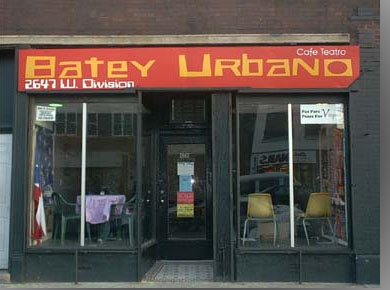This is part 3 in a series on Art and Power
Last post I wrote about the three faces of power — visible, hidden, and invisible — and how each type of power is used to oppress and dominate (as well as how we can use art and culture to resist). But power is not only a force of oppression and control. It can also be a force of creation and liberation. As organizers like Ed Chambers remind us, power simply means “the ability to act.”
Scholars and organizers have taken to distinguishing between two types of power. The first is what Bernard Loomer called unilateral power, often referred to as power over. Unilateral power is the ability to shape others to your own interests. It is sometimes seen as a zero-sum game — if you increase power, I lose it. Whoever has the most power wins. Social change groups exercise unilateral power when they mobilize large numbers of people, and sometimes money, and force decision makers to change their ways.
But there is another kind of power that Loomer calls relational power and many today refer to as power with. Relational power captures the strength that comes from people realizing their common humanity, and being able to act together. Rather than being zero-sum, it increases when more people are involved. It includes the capacity to be changed, as well as to change others. Social change groups exercise relational power as well, both within identity groups, and across lines of difference, developing relationships with sometimes-unlikely allies. In education organizing, for example, many groups have found that where they would once rely on power over to force principles to change school policies, it is sometimes more productive to build power with principles, towards shared ends.
The arts are probably not all that helpful in terms of exercising unilateral power. It’s tricky to use art to forcefully change others’ actions — though my brother makes some sculptures that could potentially serve as blunt weapons. Certainly arts can be used to capture media attention and make rallies and marches more engaging. But when it comes to forcing the hand of power holders, sheer numbers are the reliable favorite.
When it comes to building and exercising relational power, however, artistic and cultural practice come into their full strength. When we build relational power, we learn to see one another not as means to an end, but as full humans. We recognize what is similar among us, as well as appreciating differences. We begin to understand how, as indigenous artist-activist Lila Watson says, “your liberation is wrapped up in mine.” And we open ourselves up to change.
 We start to build relational power
through storytelling. A great example of storytelling through art to build relational power
is the work of Batey
Urbano. This Chicago-based organization is a space where Puerto Rican youth can
share poetry, music, visual art, and more — leading them to realize that their experiences
are similar and to commit to fighting injustice. Furthermore, Batey gathers with other
marginalized groups outsides the Puerto Rican community, sharing their stories through hip
hop and building ties of solidarity across difference. (For more, see Hip-Hop to Humanization)
We start to build relational power
through storytelling. A great example of storytelling through art to build relational power
is the work of Batey
Urbano. This Chicago-based organization is a space where Puerto Rican youth can
share poetry, music, visual art, and more — leading them to realize that their experiences
are similar and to commit to fighting injustice. Furthermore, Batey gathers with other
marginalized groups outsides the Puerto Rican community, sharing their stories through hip
hop and building ties of solidarity across difference. (For more, see Hip-Hop to Humanization)
We exercise relational power when we maintain long-term relationships and act in concert — not through negotiation and compromise, but through mutual transformation. It is one thing to agree to a short-term alliance when your interests happen to line up. This is valuable, but still an expression of unilateral power. To exercise relational power we need to combine creativity with vulnerability.
As a theater educator, I spent a number of years facilitating groups as they learned about one another, examined the world around them, and created original plays based on their collective writing and improvising. At its best, this space served as a forum for the exercise of relational power — though I did not know the term at the time. And whether we are creating a piece of art, a community, a consensus, or a movement (or all those combined), we would do well to keep that same spirit of improvisation and creativity at the center.




One thought on “More than the Sum of its (P)Arts: Relational Power and the Arts”
Comments are closed.